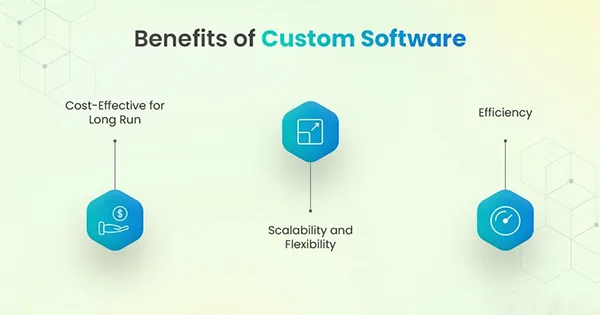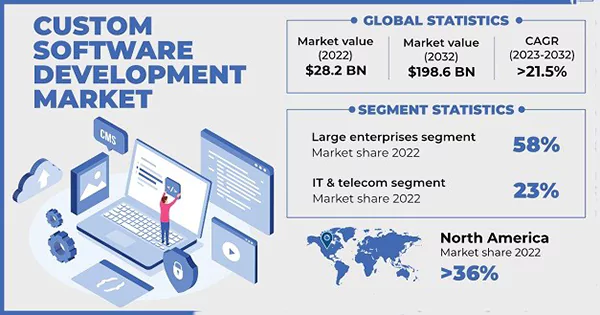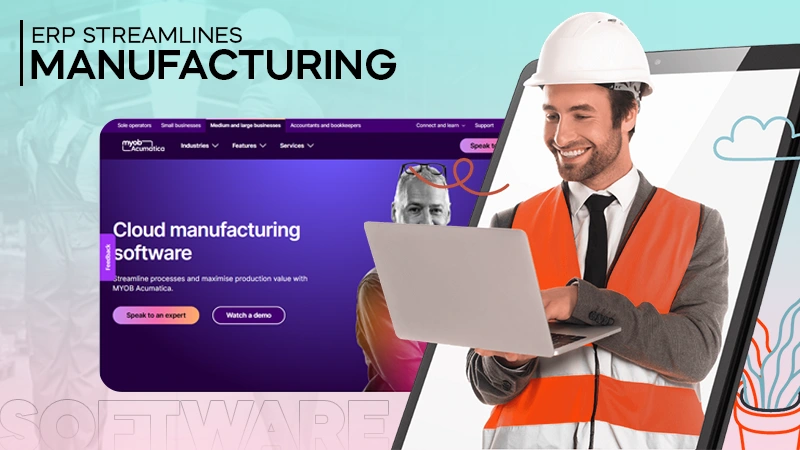Custom Software Development for Startups: Challenges in 2025
Custom software development has become more and more vital for companies hoping to get a competitive edge and spur growth.
It enables companies to design custom software solutions that precisely meet their requirements, expedite procedures, and boost productivity.
However, developing a bespoke program may be difficult, time-consuming, demanding technical expertise, and complicated, particularly for companies with little funding, resources, or in-house knowledge.
This is the point at which having an informed and skilled program development team is required, such as https://www.codica.com/services/custom-software-development/.
This blog will explore the several bespoke software development problems that startups encounter. Also, learn about How to Ensure Quality in Offshore Software Development with this guide.
Custom Software Development: An Overview
Bespoke programming, often known as CSD, is the process of creating, developing, and implementing solutions that are specifically suited to the demands of an organization.
Workflows and data administration, client interaction, and security protocol development are all included.
Custom Software Development Pros

Custom software contains features that off-the-shelf software does not, which is its primary benefit.
Their goal is to scale and upgrade the technology over time to stay ahead of the curve. Eventually, it will result in providing greater revenue over time.
The challenges that the specially developed solution addresses may make the expenses justifiable when it is put into practice.
Do You Know?:
By the end of 2024, the population of software developers is bound to touch 28.7 million worldwide.
For instance, the cost of developing the solution might be covered if you commission an application that is intended to boost productivity.
You may increase staff productivity and reduce costs if your bespoke software handles certain payroll or time and attendance issues.
Creating a solution is a great option if your company has a requirement that is specialized enough to need a bespoke program.
Quora’s study indicates that 62% of firms choose bespoke program development over off-the-shelf alternatives since they want scalability and personalized features.
According to 79% of businesses, developing it is vital to their plans for digital transformation.
38.50% of software development projects are focused on eCommerce, and 53.6% of them are centered on business automation.
Custom Software Development Cons
Everyone would use bespoke software if it was affordable and simple to develop. Unfortunately, developing a unique program solution is difficult due to expenses and dangers.
Prices
Off-the-shelf programs may be purchased for a few bucks to several thousand dollars.
Numerous common business suits feature one-time or monthly membership prices that are quite inexpensive.

Statistics:
Reports from 2022 have revealed that the Custom Software Development Market size was valued at USD 28.2 billion.
Between 2023 and 2032, it is expected to register a CAGR of over 21.5%.
However, creating one that is specifically tailored costs a lot of money. The commissioning company is responsible for paying all development-related expenses.
A tailored solution may cost five figures or more in certain cases.
Dangers
Depending on the size or scope of your project, bespoke software has different risks, but it’s simple to lose sight of your ultimate objectives.
It is necessary to discuss with your developer how you want the product to fulfill your company’s demands and to have a thorough grasp of those needs.
You will often find features and functionalities your bespoke product needs to have when it is being developed.
Changes and revisions lead to increased costs and extended development periods. Regular modifications may cause the project’s scope to be lost and lead to one that falls short of your expectations.
Who Needs Custom Software Solutions
For companies with specific demands, custom solutions are required because they may increase productivity, save costs and time, and better satisfy user expectations.
Also, it can be helpful in various fields:
- These solutions may benefit numerous sectors, including startups, small and medium-sized companies (SMBs), non-profits, and corporations.
- Big businesses may increase productivity, automate processes, and optimize workflow.
Interesting Fact:
Usually, 84.7% of software development projects are based on enterprise applications.
- Small and medium-sized businesses can discover a more cost-effective and customized solution.
- Startups may swiftly develop programs to meet their unique requirements, and non-profits can increase productivity by streamlining procedures.
- When businesses want to attract and retain audiences by sending out up-to-date and useful information.
The Top Difficulties in Developing Custom Software

As already mentioned, organizations encounter various challenges when creating and executing a particular project, which they must resolve to provide a high-quality program in the end.
The top typical problems and the integrative solution are discussed below. Look at this:
Too Few Requirements Getting Together
Inadequate requirements collecting is a major concern in it. It defines what the user needs and expects from the software.
This occurs when the project team needs to fully comprehend and record stakeholder demands and expectations.
Stakeholder dissatisfaction, scope creep, and misconceptions may result from vague or incomplete requirements.
These constraints can impact what can be achieved in the software development process.
Solution
Not all user requirements can be met, especially those when faced with significant technical constraints.
Still, it is necessary to devote enough time and energy to obtaining thorough and precise requirements to solve the problem of insufficient requirements collection.
This entails interacting with stakeholders, doing workshops, and using strategies like use cases and user stories.
The objective is to fully grasp stakeholder demands and record all pertinent information. So, being flexible and open to changes can also help in balancing user requirements.
Juggling Cost, Time, and Quality
The delicate trade-off between cost, time, and quality is complex. Companies often struggle to provide fast, high-quality programs without raising prices since estimating the cost of custom programs can be a challenging aspect.
It is subject to various time constraints and potential delays, giving up on one component might hurt the project’s final result.
You must choose your top priority and tackle the whole job in that manner. Recall that everything has to be traded for something else!
Solution
- Features should be ranked according to their inherent commercial value.
- Adopt agile approaches for adaptability and feedback that is iterated. It involves regular check-ins and updates which ultimately allows for early detection and resolution of potential delays.
- Invest in continuous integration and automated testing technologies.
- Clear communication with all stakeholders can help manage expectations. It will ensure, all the members are aligned on the project timeline and any changes to it.
Unexpected Technical Challenges
When developing bespoke corporate software, technical difficulties are typical.
These may include problems with integration complexity, scalability, or compatibility with current systems since users have high expectations for its functionality, usability, and performance.
Technical issues that are not anticipated may have a big influence on project deadlines and deliveries.
Solution
Unexpected technical challenges may be solved by doing a thorough technical analysis to identify such hazards early and create workable mitigation plans.
Using an iterative development approach can help balance technical constraints.
Moreover, technical issues may be efficiently addressed by using established solutions and enlisting the assistance of expert developers.
Conclusion
Software development is a profitable business specialization and a realistic process with possible roadblocks.
The procedure begins with the creation of a project plan and ends with delivering the finished products to the customers.
CEOs (Chief executive officers), CTOs (Chief technical officers), and COOs (Chief operations officers) must, however, be aware of these challenges and have a strategy in place to address them.
Also, if you wish to avoid similar pitfalls with your next project, it’s a good idea to get in touch with a supplier of custom program services.
They can help you provide software that is of a high quality at an affordable price.








